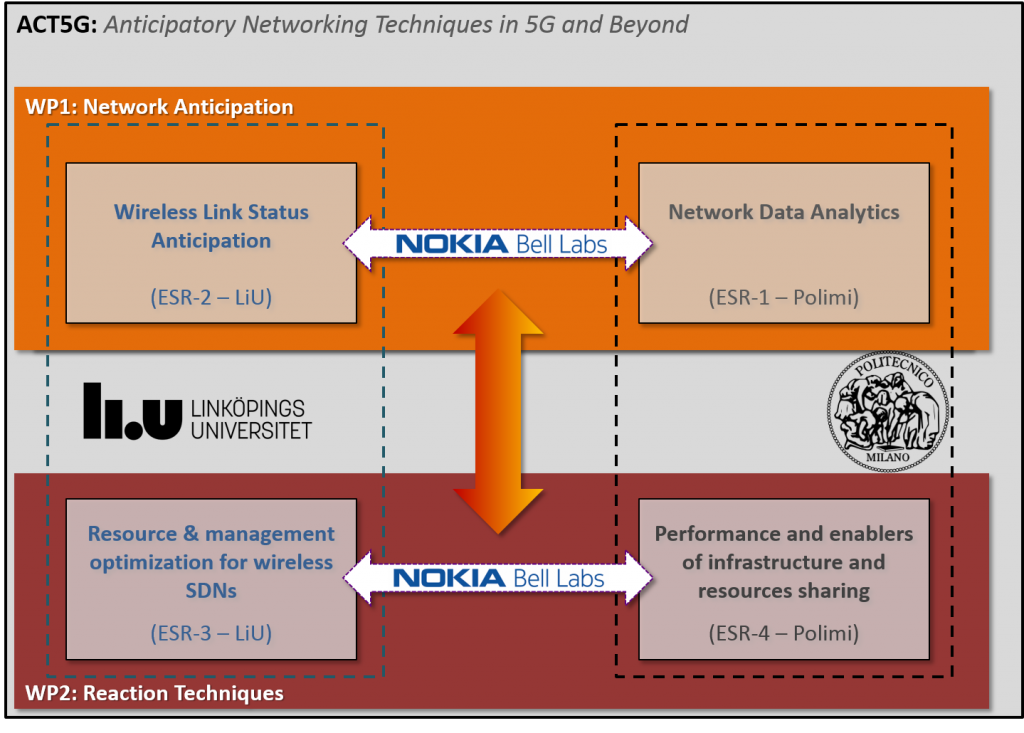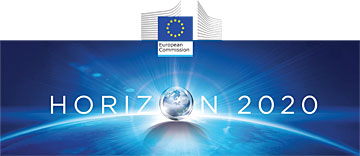Project Goals
The rapid growth in mobile broadband network data lead to the unprecedented speed of 4G LTE deployment. The evolution calls for sustainable capacity growth and performance improvement in the next generation of wireless systems, namely 5G. The success of 5G heavily relies on delivering satisfactory user experience at a low operational cost. In this context, research and development (R&D) is required not only for technological innovation at the device level, but also management system design for the flexibility necessary to predict and adapt to network usage. To this end, anticipation is a promising and new approach. By predicting and adapting to upcoming events at various time scales, an anticipatory-enabled 5G network dramatically improves the operation quality and efficiency in comparison to the existing systems. Deploying anticipatory networking with effective prediction of network behaviour offers a twin advantage: First, resources ranging from spectrum and power to network interfaces buffers can be managed optimally. Second, network operators can jointly plan how to share infrastructure and resources to provide service with substantially reduced expenditure.
The ACT5G project takes an inter-sector approach for anticipatory networking for 5G. The project fuses and integrates the scientific expertise of the participating academic sites with the industrial know-how of the consortium. The R&D core of ACT5G consists of models, methods, concepts, and algorithms for network anticipation and network reaction. The R&D tasks are carried out along with researcher training.
Project Organization:

The project is organized into 4 four workpackages: 2 technical workpackages and 2 supporting ones, as reported hereafter.
Technical:
WP1 – Network Anticipation [WP leader: LiU]: the workpackage is dedicated to developing tools and methods to predict and anticipate the network status.
WP2 – Reaction Techniques [WP leader: Polimi]: the workpackage is dedicated to design effective algorithms to leverage the information that is anticipated/predicted.
Supporting:
WP3 – Project Management & Doctoral Training [WP leader: LiU]: coordination and management activities to settle the training process of the ESRs.
WP4 – Exploitation, Dissemination & Outreach [WP leader: Nokia-Bell Labs]: management activities to maximize the impact and outreach of ACT5G.
Each ESR then focuses on one specific aspect of anticipation and reaction. Namely, the following pattern does apply:
ESR1: Network Data Analytics [Academic Site: Polimi – Fellow: Claudia Parera]
ESR2: Wireless Link Status Anticipation [Academic Site: LiU – Fellow: Cristian Tatino]
ESR3: Resource & Management Optimization for Wireless SDNs [Academic Site: LiU – Fellow: Emmanouil Fountoulakis]
ESR4: Perfomance and Enablers of Infrastructure and Resource Sharing [Academic Site: Polimi – Fellow: Özgür Umut Akgül]
Project Funding
ACT5G is a 48-month project funded by the European Union within the Horizon 2020 Marie Skłodowska-Curie Actions – Initial Training Networks (ITN) European Industrial Doctorates (EID) (H2020 MSCA-ITN, project no. 643002). The project supports four Early Stage Researchers (ESRs) working on different aspects of anticipatory networking; the ESRs will obtain their PhD at one of the project partners; all four recruited PhD students are co-supervised by researchers at Nokia – Bell Labs in Germany, and will spend 50% of their project involvement duration in Stuttgart. A two-month intensive summer study camp is foreseen at the partner site of University of Maryland – College Park, MD, USA.

